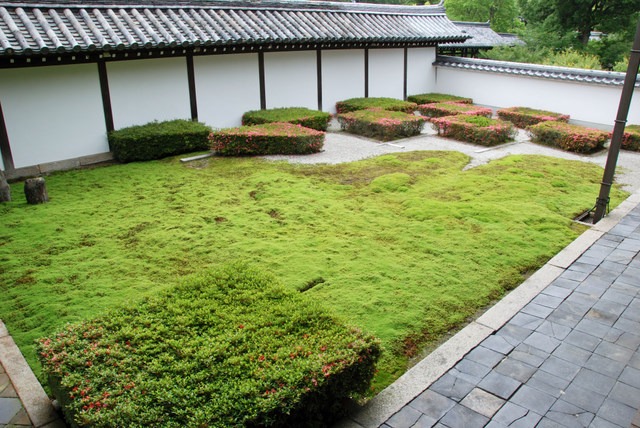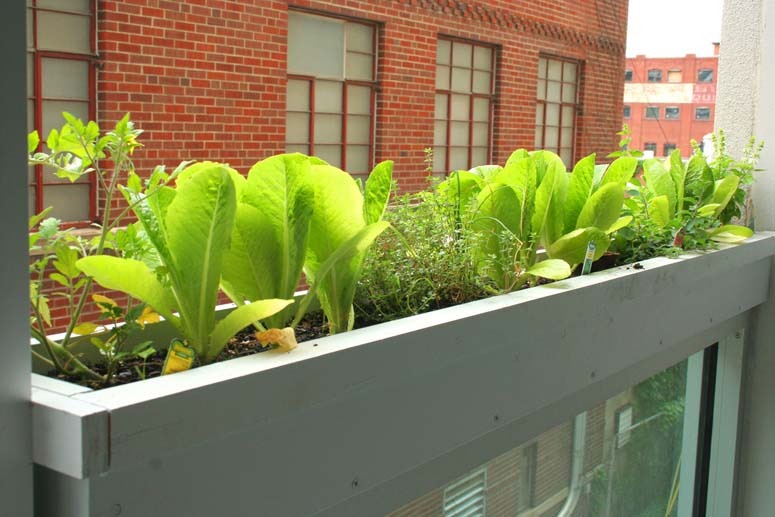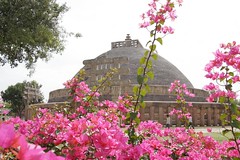
Christian Tschumi has written a very useful book on Mirei Shigemori – Rebel in the Garden – Modern Landscape Architecture (Birkhauser 2007) though it puzzles me why he does not see it as a book on garden design.
Mirei Shigemori (1896–1975) wanted Japanese gardens to be modern but he did not want them to be western, despite the fact that in admiration of the west he had named his children after Immanuel Kant, Victor Hugo, Johann Goethe, Herman Cohen, and Lord Byron – an astonishing group. I have often admired photographs of the Moss garden at Tofuku-ji (1939), as illustrated in the Wiki article on his work. But the designs illustrated by most of the photographs in Tschumi’s book do not reach this standard and another photograph of the same garden (image, right, courtesy I-Ta Tsai) makes this point: the design is too experimental; the scale is not well judged; the geometry is unsophisticated.
Shigemori identified three possible approaches to Japanese garden design (1) pursuit of the classical style (2) using the best of classical and modern ideas (3) creating something completely new (modernism). These policies are discussed elsewhere on this website as Similarity, Identity and Difference (SID). I support them all!
Shigemori was an artist and a scholar whose own approach, ‘(2)’ in the above list, was certainly context-sensitive. So what went wrong? I have not seen his work except in photographs but will hazard two guesses:
- his adoption of a western design method (design-by-drawing) detached him from the intimate craftsmanship and immaculate judgment of scale which is crucial in Japanese gardens
- his introduction of concrete to Japan was a complete mistake – the material is inherently at odds with the wabi-sabi aesthetic and ill-suited to the interpretation of nature on which the Japanese garden depends.







